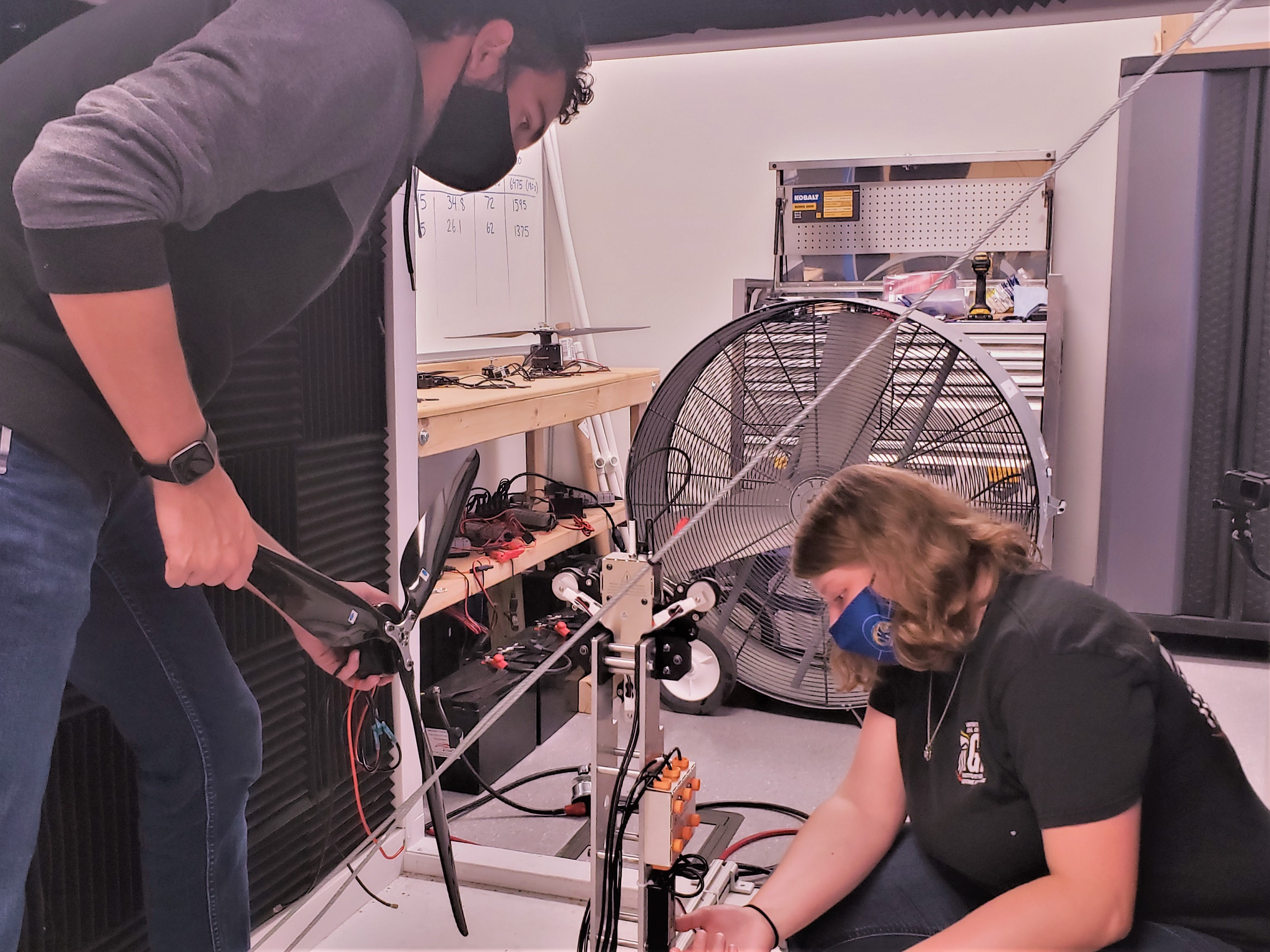Innovation
A lightweight high energy density (400 W-h/kg) on-board power source that enables vertical takeoff and landing (VTOL) type aircraft to have potentially extended flight time (12 hours) and increased payload.
Objective
Our approach is to hybridize advanced fuel cells, modern batteries and high-power density capacitors to maximize the on-board power density and to extend the flight time ofthe UASs. Our hybrid power system utilizes fuel cell to provide a constant average power for cruising, while peak power is supplied by a battery and a capacitor bank in addition to the fuel cell.
Background
Unmanned Aircraft Systems (UAS) are an emerging sector of the aerospace industry with rapidly accelerating market demand and growth. Unmanned Aerial Vehicles (UAVs) are the predominant segment of the UAS market, which has seen multi-billion-dollar sales with more than 10% annual growth. Given this large market opportunity, the Air Force, NASA and other federal agencies, as well as commercial sectors are all seeking ways to advance UAS/UAV technologies.One of the major gaps that exists between the needs of the UAS/UAV market and currently available technology is that of an adequate on-board power source to support the robust technical features and operational constraints of UAS, particularly UAVs. Current commercially available on-board power source technologies are either too heavy, too noisy or offer too short of a flight time and cannot support a UAV’s vertical takeoff and landing (VTOL), 12-hour flight time and quiet operation. Thus, the challenges are weight, transient peak power demands, flight endurance, system integration, and UAS structural design.
Our team members are all experts from each of the areas needed to ensure the project success.
Dr. Yanhai Du (Lead PI), has over twenty years fuel cell development experience and served as PIs or Lead Engineers for multi-million-dollar federal projects sponsored by NASA, ONR, DARPA and US Army.
Dr. Du has a full Fuel Cell Research and Development Lab at Kent State University.
Mr. Jeff Taylor, Founder of Event38 Unmanned Systems Inc., a 2018 OFRN award winner, is a multidisciplinary engineering team leader with a diverse background in small and large aerospace vehicle development. Event38 has an aircraft ready to be modified for the flight demonstration.
Dr. Hamed Attariani brings his battery expertise and his Virtual Material Testing Lab at Wright State University.
Dr. Lei Zhu is a professor at Case Western Reserve University, a well-respected capacitor researcher and expert in ferroelectric and dielectric functional polymers for electrical applications.
Dr. Rui Liu leads the simulation of the hybrid power systems in his Cognitive Robotics and AI Lab (CRAI) at Kent State University.
Dr. Blake Stringer, an expert in UAS propulsion scalability and unmanned aircraft traffic management, leads the 12-hour flight time demonstration using simulated power load in his Unmanned VTOL Propulsion Lab at Kent State University; his research funded by the Department of Defense.
Dr. Dong Cao is the GE EPIS Center Professor at University of Dayton, he has 10+ years’ experience in automotive industry and academia on power electronics hardware and control development, he leads the effort to manage the hybrid power system for the flight power needs.
Commercial Goals
Outcomes of the project include verifying the performance of each power component; simulation results of the combination of the fuel cells, batteries and capacitors; and demonstrations. The simulation results of the hybrid power source will provide a matrix to allow for the selection of the appropriate fuel cell, battery and supercapacitor for missions with given flight time and payload.
The demonstrations will include:
- A flight test of up to 12-hours using a simulated power load in the VTOL Propulsion Lab at Kent State University to verify the potential of 400 W-h/kg energy density for a 12-hours flight time.
- A 60-minute actual VTOL UAV flight at a location designated by OFRN. We anticipate the technology readiness level (TRL) will be TRL 6 upon the completion of the 18-month project.
Successfully completing this work will have a tremendous impact on both the Ohio economy and on the broader growth of the emerging UAS/UAV market.

